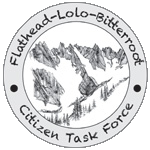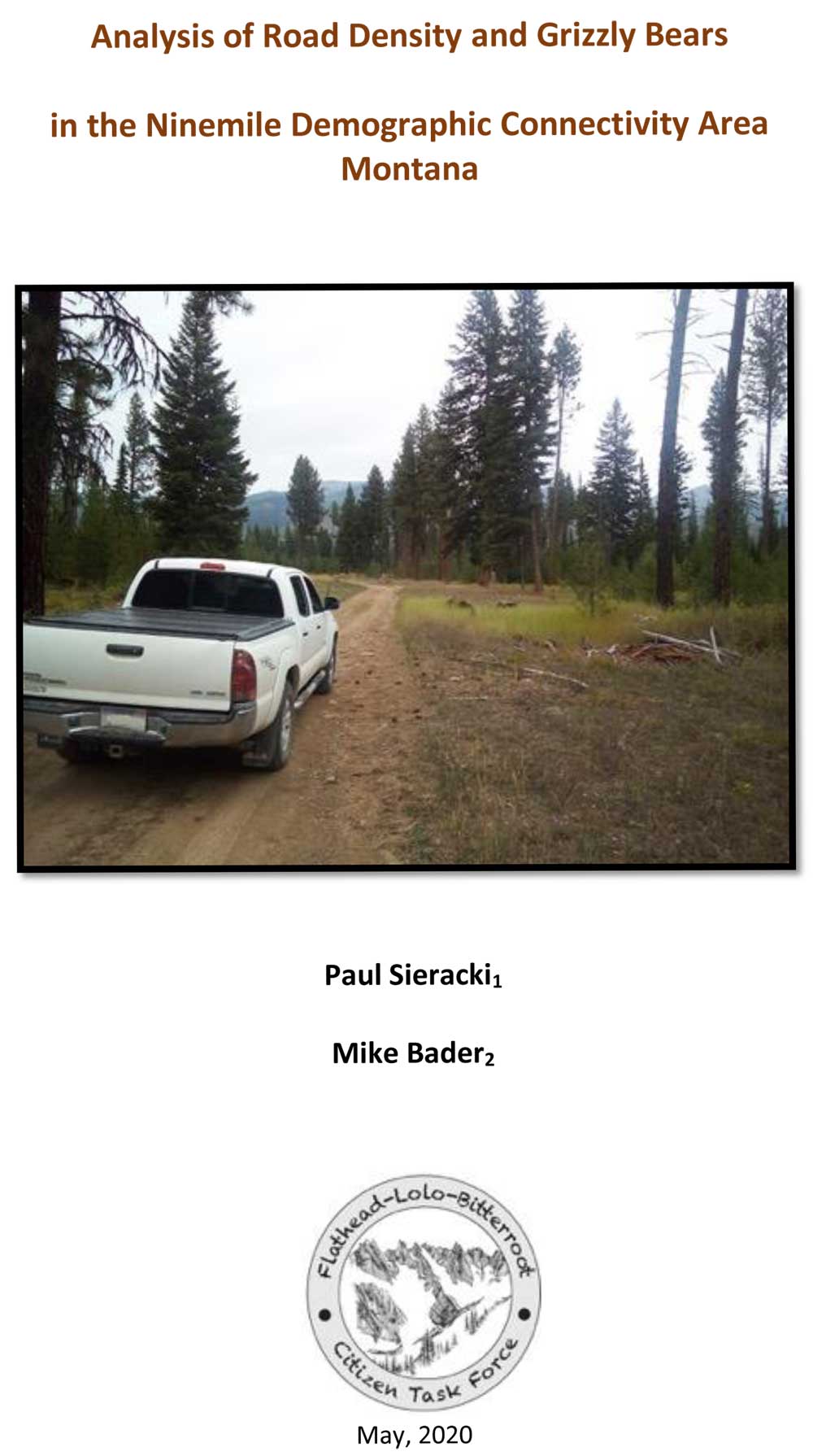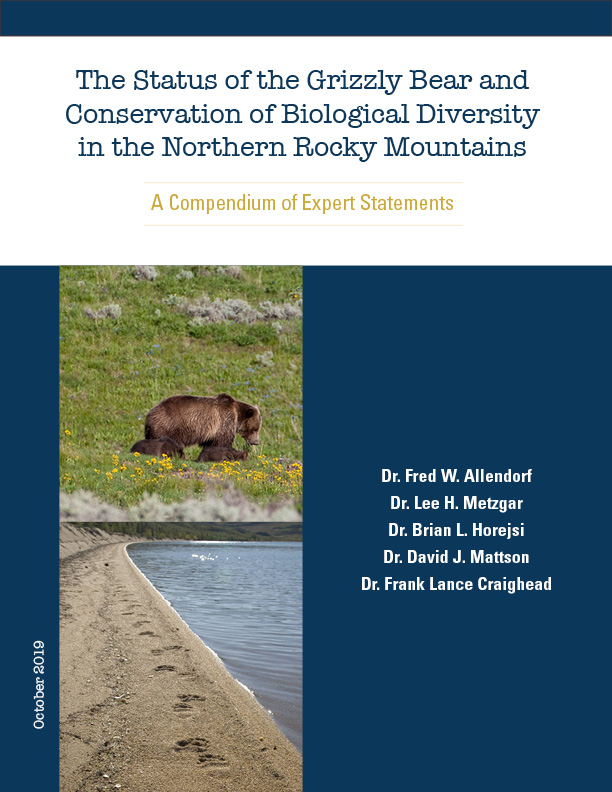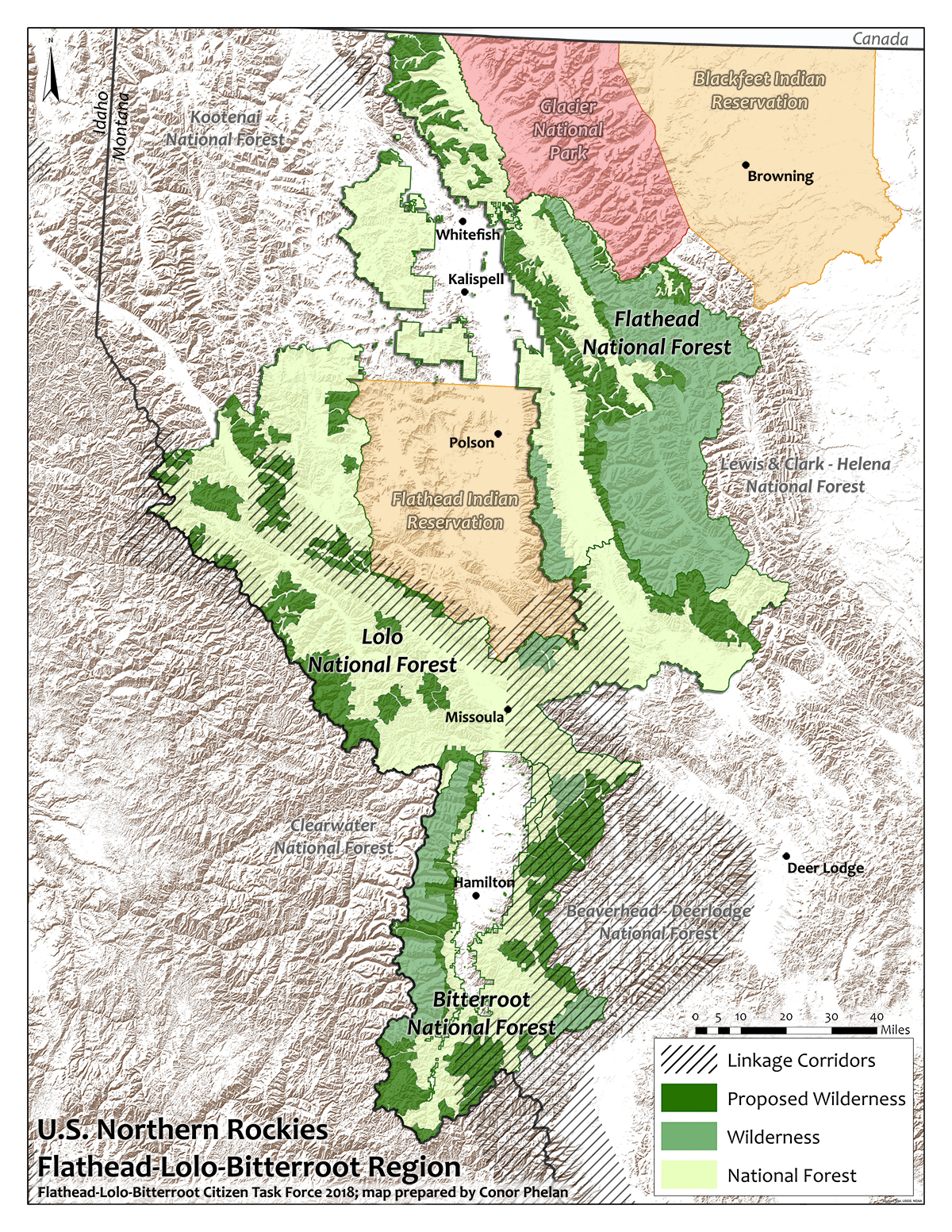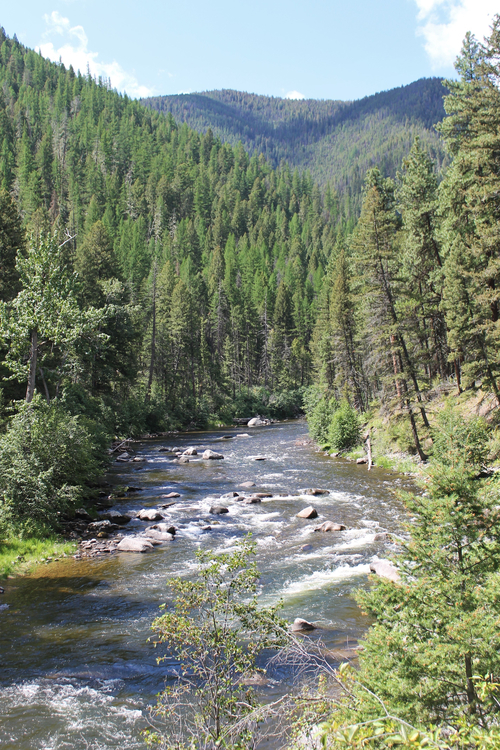Recently a number of conservationists from throughout the northern Rockies led by Gary MacFarlane of Friends of the Clearwater met with representatives of the U.S. Fish & Wildlife Service including Grizzly Bear Recovery Coordinator Hilary Cooley. The common theme that emerged is the alarming number of mega-projects on National Forest lands, degrading habitat for threatened and endangered species including grizzly bear and bull trout. All the forests in the vicinity of western Montana and north-central Idaho have approved or proposed mega- projects.
On the Flathead National Forest, the Mid-Swan Project includes 60 miles of new permanent roads and millions of board feet of logging in areas including lands transferred to public ownership and still recovering from years of abuse under Plum Creek ownership. This project is in the middle of identified connectivity for grizzly bears and lynx and contains habitat for bull trout. On the Bitterroot National Forest the Gold-Butterfly Project proposes over 20 miles of new roads and 10,000 truckloads of logs from old growth forest and bull trout, lynx and grizzly bear habitat. On the Lolo National Forest the Soldier-Butler Project has 9 miles of new roads and cancels a previous commitment to decommission 37 miles of road within the Nine Mile Demographic Connectivity Area designated by the U.S. Fish & Wildlife Service for grizzly bears. It would produce 3,000 truckloads of commercial logs. On the Kootenai National Forest the Black Ram Project would log 60 million board feet, including 1,000 year old rain forests in some of the last remaining secure habitat for the “warranted for endangered” Cabinet-Yaak grizzly bear population. The Nez Perce-Clearwater National Forests have proposed the biggest mega- project of them all, called the End of the World Project (no joke). It would result in 250 million board feet of commercial logging (a quarter of a billion). Taken together, the mega-projects threaten core ecosystems and habitat connectivity on a landscape scale across the Northern Rockies.
In addition to these destructive logging and roadbuilding proposals, the Forest Service is also promoting mountain biking and running events within prime grizzly bear habitat, against the advice of experts including Dr. Chris Servheen, former Grizzly Bear Recovery Coordinator and lead author of the Board of Review Report on the risks of mountain biking in grizzly bear habitat. For more information, visit: swanviewcoalition.org
The Flathead-Lolo-Bitterroot Citizen Task Force remains committed to producing a Citizen Forest Plan based on the best available scientific information to ensure long-term protection for wildlife and wildlands as part of the forest plan revision process for the Lolo and Bitterroot National Forests. This will include protection of roadless areas and habitat connectivity areas and specific standards for protection of bears, elk, lynx and bull trout. In the face of bad management and decision-making by the Forest Service, it is imperative for citizens to come together in defense of our public wildlands. Stay tuned for the rollout of our plan.
![]() Montana Governor Names Advisory Council
Montana Governor Names Advisory Council
![]() Feds' appeal says federal judge in Missoula overstepped in grizzly delisting case
Feds' appeal says federal judge in Missoula overstepped in grizzly delisting case
![]() Disconnect between policy, action on grizzly bears
Disconnect between policy, action on grizzly bears
![]() FLB Citizen Task Force comments
FLB Citizen Task Force comments
![]() Press release—Groups protest MT FWP Bear Plan "Sleeper" Hunting Provision
Press release—Groups protest MT FWP Bear Plan "Sleeper" Hunting Provision
![]() Grizzly protection plan falls far short, The Spokesman Review
Grizzly protection plan falls far short, The Spokesman Review
![]() Grizzly recovery faces cloudy future, Missoulian
Grizzly recovery faces cloudy future, Missoulian
![]() Golf course griz raises lots of questions, Missoulian
Golf course griz raises lots of questions, Missoulian
![]() Flathead National Forest releases its new Forest Plan, Hungry Horse News
Flathead National Forest releases its new Forest Plan, Hungry Horse News
